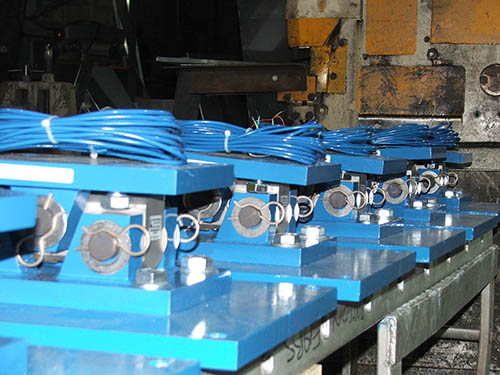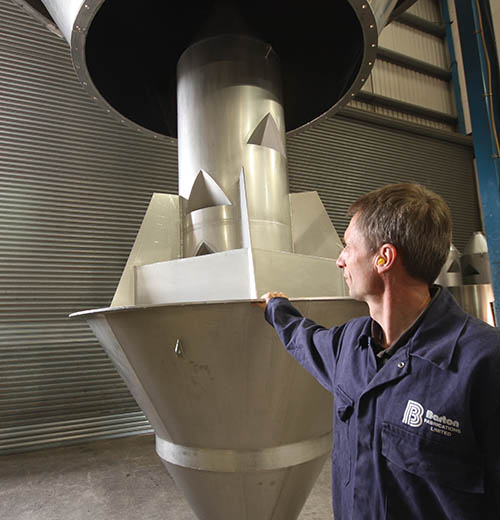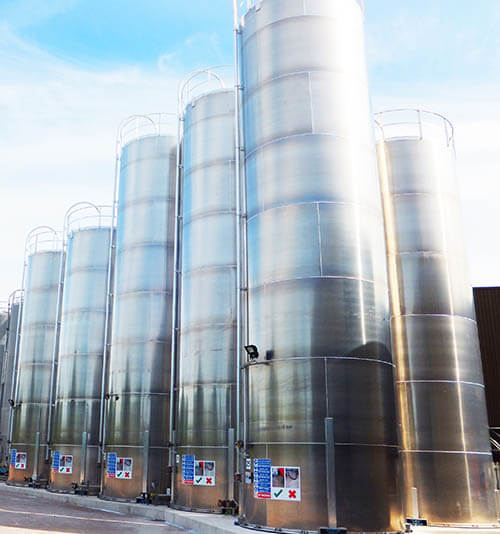Installing a storage silo represents a significant capital investment, so what are the key benefits and when should a company consider moving from sack to silo storage to meet its raw material logistic needs?
In this article* Mark Barton MD of Barton Fabrication’s, the UK’s largest aluminium silo manufacturer explains the advantages of using silos and outlines when a company might benefit from installing a silo to store its plastic feedstock. The article also outlines an online silo sizing tool created by Barton Fabrications, which assists silo specification and provides users with an opportunity to calculate silo tonnage for different stored materials with various vessel dimensions.
There are four main occasions when users of powdered or granular plastic feedstock typically re-assess their supply logistics. These are when there is a significant increase in product demand, when raw material supply costs are being reviewed, when a company is running out of space on its site or when a new production facility/site is being planned. There are numerous benefits of moving from feedstock supplied in sacks to silos, but these can be broadly split into four areas:
1. Cost reduction (both direct and indirect)
2. Safety improvements
3. Environmental benefits
4. Plastic industry considerations
Cost Reduction – Significantly lower raw material costs
The most obvious benefit of installing a silo is a reduction in the cost per tonne of the plastic raw material when compared to ‘sack’ supply. Whether buying from a regular supplier or spot buying, volume discounts are achievable. In addition there are savings as bags / containers / pallets are no longer required including their disposal / removal costs. Delivery charges can also be lower as more efficient bulk transport reduces delivery frequency.
As an example of how significant these savings can be, a UK automotive components supplier who recently installed three silos has seen a 30% saving on its raw material purchase costs. This saving includes the polymer cost, delivery cost and expense incurred in moving and disposing of packaging. This represents a significant cost reduction of £230k per annum.
Reduced Indirect Costs:
There are numerous other cost savings, including reduced material handling costs associated with unloading delivery vehicles and emptying sacks into feedstock hoppers.
Order processing, inventory management and line stoppage costs associated with raw material shortages can also be reduced as load cells can be fitted to monitor silo contents. These, combined with telemetry, give real-time, accurate stock measurement, which can be used by the raw material supplier to ensure the silo is refilled when necessary without end user intervention.
Warehousing costs are reduced as there is no requirement for inside storage of the raw material and the overall storage space required on-site is reduced compared to sack storage as silos offer a smaller footprint for a given storage capacity. In addition, there are no losses or scrapage costs associated with material spillage and, as silos offer a closed system, there is little dust released which results in lower cleaning costs.

Silo load cell

Load cells awaiting silo fitment
Safety improvements from reduced handling
One important non-financial benefit of using silos is the fact that containers don’t need to be moved and fork lift trucks (FLTs) therefore aren’t required to relocate pallets of storage sacks: the result is improved site safety. According to Health and Safety Matters* based upon the findings of the Fork Lift Truck Association, 43 people are likely to be injured in the UK by fork lift trucks each week. The reduction of FLT movements after installing a silo is therefore a major site safety benefit. In addition, the potential to cause injury to operatives from manual handling of emptying sacks into hoppers is eradicated.
Environment benefits
Some of the silo supply benefits previously outlined could be categorised as environmental improvements, however there are some benefits which are very much categorised as environmental. One of these is a reduction in pollution / noise arising from reduced delivery vehicle movements. In addition tanker supply negates the need for raw material packaging usage / disposal thus improving a company’s environment credentials.
Plastic industry considerations
Within the plastics industry there is a general move to increase the amount of recycled material into the feedstock supply chain, however whilst virgin material is very homogeneous the same is not always true for regrind recycled material. To mould consistent plastic products recycled raw material feedstock must be well mixed both between batches and with virgin material. In order to achieve this, Barton have developed and exported worldwide an in-silo static mixing system. The innovative blender design, which can also be retrofitted to existing silos, ensures that material is taken from different parts of the silo during the discharge process providing much greater mixing without using power or introducing a maintenance requirement. A clear Perspex silo model fitted with a blender can be used to demonstrate the high level of mixing using the customers own materials before the full scale aluminium blender is fabricated.

Barton static blender unit ready for dispatch
When to move to silo storage?
Having outlined the various benefits in this article, the key question is when is the correct time to move from sack to silo storage? In addition to the direct materials cost savings there are some very site specific benefits e.g. will the reduction in FLT movements mean a reduction in the number of FLT drivers to reduce labour costs. Working through the benefits outlined above, and assessing a cost saving against each item, allows the calculation of the total financial cost saving and installation payback period. Clearly, the less tangible issues such as improved site safety must also be included and, again, a financial cost impact may be included. Once the financial assessment has been made and shown to deliver cost savings, then further details about silo location and sizing needs to be considered.
Silo Size Calculation tool
To simplify this process Barton Fabrications has produced a simple silo sizing tool on its website www.bartonfabs.co.uk. The tool allows the stored material option to be selected from the Material / Bulk Density pull down list. Silo dimensions can then be entered subject to site footprint and height constraints. Note the maximum silo diameter which is permitted on UK roads is 4500mm. Pressing the ‘Calculate’ button then gives the storage size in tonnes and can be printed out for future reference.
For example a silo 4m diameter x 15m high will store 92 tonnes of plastic granules but only 85 tonnes of powder due to the steeper angle of the discharge cone section of the silo.

Barton silo sizing website tool
In conclusion
Moving from sack to silo storage can deliver both significant direct and indirect cost and safety improvements. This article has outlined the areas where customers have typically seen benefits, specific advantages will vary for different installations and applications. To assist the process, Barton works closely with most of the UK / European materials handling contractors to provide a seamless one stop shop for plant / silo installation. Alternatively, the company can be contacted directly for its silo specification, manufacture and installation service.
For more information about silo storage solutions contact Mark Barton at Barton Fabrications.
Tel +44 (0) 1275 845901 or e-mail sales@bartonfabs.co.uk
*Article first published in British Plastics and Rubber Magazine. Issue 8/2017.


